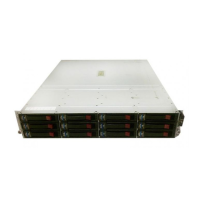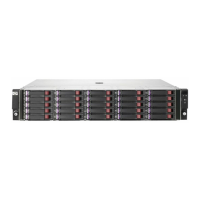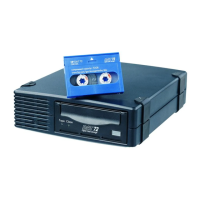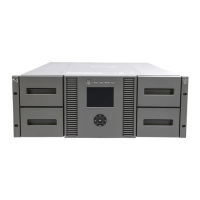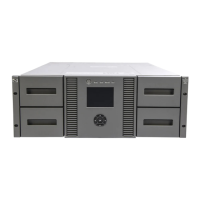LUSE Logical Unit Size Expansion. The LUSE feature is available when the HP StorageWorks LUN
Manager product is installed, and allows a LUN, normally associated with only a single LDEV,
to be associated with 1 to 36 LDEVs. Essentially, LUSE makes it possible for applications to access
a single large pool of storage.
M-VOL Main volume.
MCU Master control unit.
MPB MSL to MicroProcessor Blade
MU Mirror unit.
ORM Online Read Margin
P-VOL Primary volume.
parity group A set of hard disk drives that have the same capacity and that are treated as one group. A parity
group contains both user data and parity information, which enables user data to be accessed
if one or more drives in the group is not available.
path A path is created by associating a port, a target, and a LUN ID with one or more LDEVs. Also
known as a LUN.
PAV Parallel access volume.
PCB Printed circuit board.
PDEV Physical device.
port A physical connection that allows data to pass between a host and the disk array. The number
of ports on a disk array depends on the number of supported I/O slots and the number of ports
available per I/O adapter. The P9000 and XP family of disk arrays supports Fibre Channel (FC)
ports as well as other port types. Ports are named by port group and port letter, such as CL1-A.
CL1 is the group, and A is the port letter.
R-VOL Remote volume.
RAID level A RAID level is one of the ways that disk drives are grouped together to improve performance,
data availability/reliability, or both. RAID levels are defined from RAID0 to RAID6. HP
StorageWorks Disk Arrays in the P9000 and XP product family support RAID1, RAID5 and RAID6.
Not all of these RAID levels are supported by all P9000 and XP family members. Consult the
owner’s guide or your HP representative for the details about which RAID levels are supported
by your specific P9000 or XP disk array.
RAID Manager The CLI configuration and replication tool for the P9000 or XP disk array that can be used by
system administrators to enter RAID Manager commands from open-system hosts to perform
TrueCopy, ShadowImage, Data Integrity Check operations, and provisioning commands on
logical devices.
RCU Remote control unit.
Remote Web
Console
A browser-based program installed on the SVP that allows you to configure and manage the disk
array.
RIO Remote I/O.
RM HP StorageWorks RAID Manager.
S-VOL Secondary or remote volume. The copy volume that receives the data from the primary volume.
SAS Serial Attached SCSI.
SCP State-change-pending.
SIM Service information message.
SMPL Simplex.
SSB Sense byte.
SSD Solid State Disk.
SVP Service processor. A computer built into a disk array. The SVP, used only by an HP service
representative, provides a direct interface to the disk array.
220 Glossary

